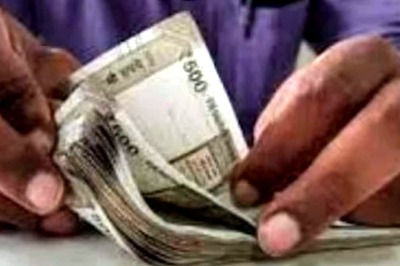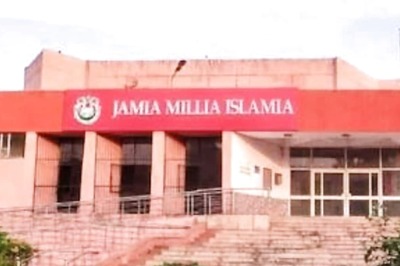
views
With tax raids unearthing large amounts of cash from various places across the country, here is a compilation from reports and sources on how the black money is being possibly converted.
Through banks
a. Senior officials allegedly connive with black money hoarders. Money is infused into the banking system after banking hours. Money is accepted by banks into various shell companies. Deposits are purposely kept below a threshold limit to escape the eye of economic intelligence agencies. The Banks fail to raise Suspicious Transactions Reports (STR) and Cash Transaction Reports (CTR). Many layers are created through shell companies to hide the final beneficiary of the money.
A probe into a cash haul reportedly found it was part of a major racket where bullion traders took old currency for conversion into gold at a much higher price.
This was done with a number of middlemen collecting money and remitting into the accounts of bullion traders through shell companies. Forensic probe also found that thousands of fake invoices were raised by jewellers within hours of announcement of demonetisation. Invoices were purposely kept below Rs 2 lakh to escape the mandatory requirement of KYC norms. Jewellers also purposely tampered with CCTV footage of the shops.
Interestingly, two bank managers allegedly took bribes in the form of gold bricks. Both have been arrested by Enforcement Directorate.
b. In one of the branches of a bank, 44 accounts were found to be fake. Again the submission of money was purposely kept below a particular amount to escape the eye of bank managers. A probe found more than 100 crore was submitted since the announcement of demonetisation. The bank failed to follow normal KYC norms and guidelines issued by Reserve Bank of India. The probe is still on to find the real owners of the money.
2. In the case of S C Jaychandra, Chief Project Officer, State Highway Development Project Government of Karnataka money was converted through various means.
a. ED probe found that a chain of middlemen misused exemption given to NABARD by RBI to accept old currency. Agents appointed by NGOs to collect payments on behalf of NABARD from women associated with self-help groups, collected new currency from them and submitted old currency with NABARD. For doing so they charged a commission of around 25 percent.
b. Apart from this, several households who were having accounts in the banks were used to withdraw Rs 24000 new currency notes (maximum withdrawal allowed as per RBI circular). Exchange was done through various middlemen/agents. After conversion, middlemen were given 25% commission. The same process was adopted using multiple bank accounts.
c. Current accounts were also misused in the process and several persons having numbers of current accounts used to withdraw Rs. 50,000 from each account per week (maximum limit granted by RBI). Commission was paid to middlemen for conversion of black money. After withdrawal, old currency was again deposited in the same current account.
3. Agencies still need to establish modus operandi in the case of seizures from a law firm in Delhi and a jewellery firm in Chennai.

















Comments
0 comment